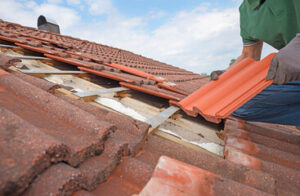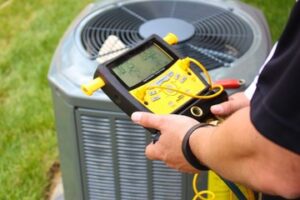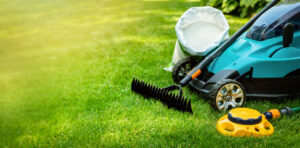A sturdy roof protects your home from harsh weather conditions and keeps you and your family safe. However, even a well-maintained roof will eventually reach its lifespan.
It’s important to know when new Roofing Missoula MT is needed so you can prevent serious problems and costly damage. Here are some warning signs you should look out for.

Shingles Are Damaged
Shingles are the outer layer of your roof that protects your home. Over time, they can become damaged from weather conditions or general wear and tear. Damaged shingles can lead to leaks and other issues that need to be addressed immediately.
Water Stains or Leaks
Water stains on the ceiling and walls are a sign of a roof leak. Left unaddressed, a leak can cause severe damage to the interior of your home and lead to expensive repairs. If you notice any water stains, it’s important to contact a professional roofing contractor right away.
Missing Shingles
A missing shingle is an immediate sign of roof damage. This leaves your roof exposed to the elements, which can lead to more significant problems, such as structural damage and moisture infiltration. Missing shingles should be replaced as soon as possible to prevent further damage to your roof and your home’s structure.
Blistering Shingles
Asphalt shingles can begin to shed their granules as they age, which can leave them vulnerable to damage. If you see shingles that appear to be losing their granules, it’s important to contact a roofing professional for an inspection. Blistering shingles are usually caused by moisture trapped on the roof, poor ventilation, or faulty installation.
Over time, shingles can develop concave centers and raised edges, called cupping or curling. This type of damage is usually caused by aging or excessive heat exposure from a poorly ventilated attic. Curled shingles provide a bowl-like shape for rain, snow, and ice to pool in, which can lead to moisture infiltration and costly repairs. When inspecting your roof, make sure to pay close attention to the flashing around chimneys, vents, and skylights to ensure that it’s still securely sealed.
Shingles Are Missing
Missing shingles create a gap in your roof’s protection. This gap can allow moisture, pests, and debris to enter your home. It can also lead to deterioration of the roof deck and a weakened roof structure. Additionally, it can cause a ceiling leak and decrease the energy efficiency of your home.
It’s important to check your roof regularly for signs of missing shingles. You can do a visual inspection using binoculars, or you can take the ladder up and look for yourself. If you’re missing a large area of your roof, then it’s likely time for a full replacement.
Another sign that your roof needs a replacement is if you see shingle granules in your gutters and downspouts. This is an indication that the shingles are becoming worn out and can be easily blown off during windy conditions. Missing shingles also mean that they’re no longer protecting your roof from the sun’s harsh UV rays.
You should also pay attention to the condition of your attic insulation if you find that your roof has been damaged by a missing shingle. Gaps in your attic insulation can allow water and cold air to penetrate your home, leading to damage to walls, ceilings, and even electrical systems.
If you’re missing a large amount of shingles, then it’s likely time to file an insurance claim and get a new roof. Your insurer will provide you with a list of qualified roofers who can perform the work at an affordable price. If you have no roofing experience, then you should enlist the help of a professional roofer who can ensure a thorough and safe job. A shingle repair or replacement can be performed quickly and will help protect your home from further damage and increase its value.
Shingles Are Loose
It’s obvious that missing shingles are bad news and should be replaced immediately. A roof is a unified protective force against weather, and without its shingles, your home may suffer severe water damage. Even if you’re only missing one shingle, though, it’s a sign that your roof needs attention.
Loose shingles can allow rain and other debris to enter your home, which is a problem if you live in an area with frequent rainfall or snowfall. A good way to spot loose shingles is to look at the bottom of your home’s exterior walls. If you notice dark streaks in the siding, that’s a sign of water damage caused by leaking shingles.
If you have a roof inspection done regularly, you can keep an eye out for loose shingles and repair them as soon as possible. You can use a flat pry bar to loosen the nails around the damaged shingle and gently pull it up, starting at the top edge. Next, you can slide the new shingle into place and secure it with roofing nails. Most shingles come with guide holes, and you can easily line up the new shingle with the existing ones surrounding it to nail it into place.
Another way to spot a faulty roof is to look for granule loss. Granules are the small black or grey bits that are embedded in shingles to add fire resistance, color, and UV protection. Losing some granules is normal, but excessive granule loss can indicate that the shingles are reaching the end of their lifespan. This can cause several problems, including bare spots on the roof and discolored gutters. If you notice this issue, contact a professional roofing contractor to have your roof evaluated.
Shingles Are Curling
When shingles curl, they start to lose their ability to protect your home. They become vulnerable to moisture and can lead to leaks, mold, and mildew growth inside your home, as well as a general rundown appearance. It’s not only unsightly to look at but can also reduce your home’s curb appeal and increase your energy bills.
Curling shingles are a clear sign that it’s time to get a roof replacement. While you may be able to repair some of them, most will likely need to be replaced to prevent future damage to your home and to avoid costly water leaks.
There are a few things that can cause shingles to curl, including improper installation, old age, and poor-quality roofing materials. If your shingles have started to curl, it’s important to contact your roofing contractor right away so that they can inspect the problem and make repairs if necessary.
Improper Installation
Roofing manufacturers have specific specifications for the way that their products should be installed. This includes the number of nails allowed per shingle, what type of nail is used, and even what outside temperatures are best for the shingles to be installed in. Failure to follow these guidelines not only increases the likelihood of shingle problems like curling but can also void your product warranty.
If your shingles are starting to curl, it’s a good idea to have them inspected by a professional. If you are comfortable climbing on your roof, you can perform a visual inspection yourself and assess the condition of your shingles. If you’re not comfortable doing this, you should hire a professional to help you determine whether a simple shingle repair or a full roof replacement is needed.
Shingles Are Cracked
A good quality asphalt shingle roof is designed to withstand the elements, but the sun and wind can cause damage. Two common signs of weather-induced roof damage are cracking and splitting. Both of these types of damage can increase the risk of leaks in your home, and both should be addressed by a roofing contractor.
Cracked shingles may not seem like a big deal at first glance, but they can lead to serious problems if left unaddressed. Cracks in shingles allow moisture to penetrate the roofing system and the underlayment of the roof deck. As the cracks continue to develop, they can weaken the integrity of the entire roof structure.
The most common reason a roof can begin to crack is because the shingles are reaching the end of their service life. This can occur for several reasons, including thermal cycling or the aging process. The cracks in this case are due to the shingle’s ability to expand and contract, which can cause stress on the granules. Over time, this can result in the shingle fracturing and separating from the adhesive strip at the bottom of the shingle.
Another potential cause of cracked shingles is improper installation. This can include using nails that are the wrong type, size, or spacing. This can also include the nail being driven into the shingle too far, which can cut into the shingle and create leaks in the future.
One of the most important things to look for when hiring a roofing contractor is to ensure that they use the correct nails for your particular roofing system. This includes the correct size, type, and spacing for the nail in the shingle, as well as the proper nailing pattern. This will help prevent the nail from cutting into and damaging the shingle or the underlayment of the roof.








